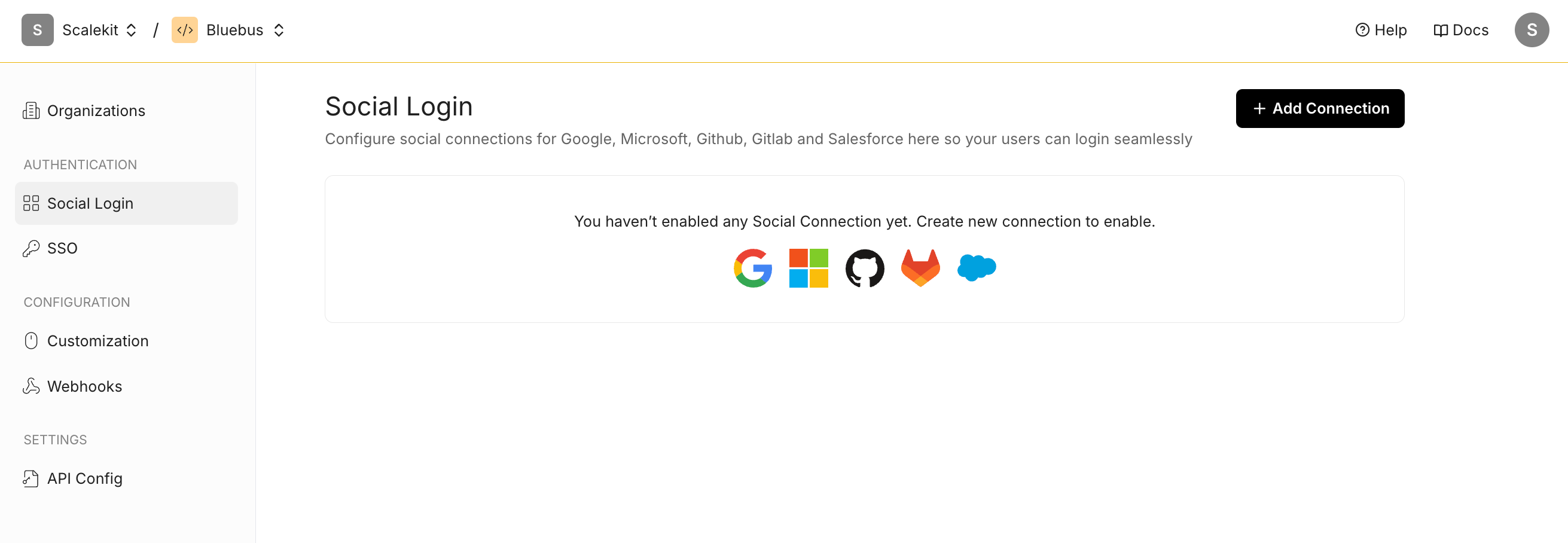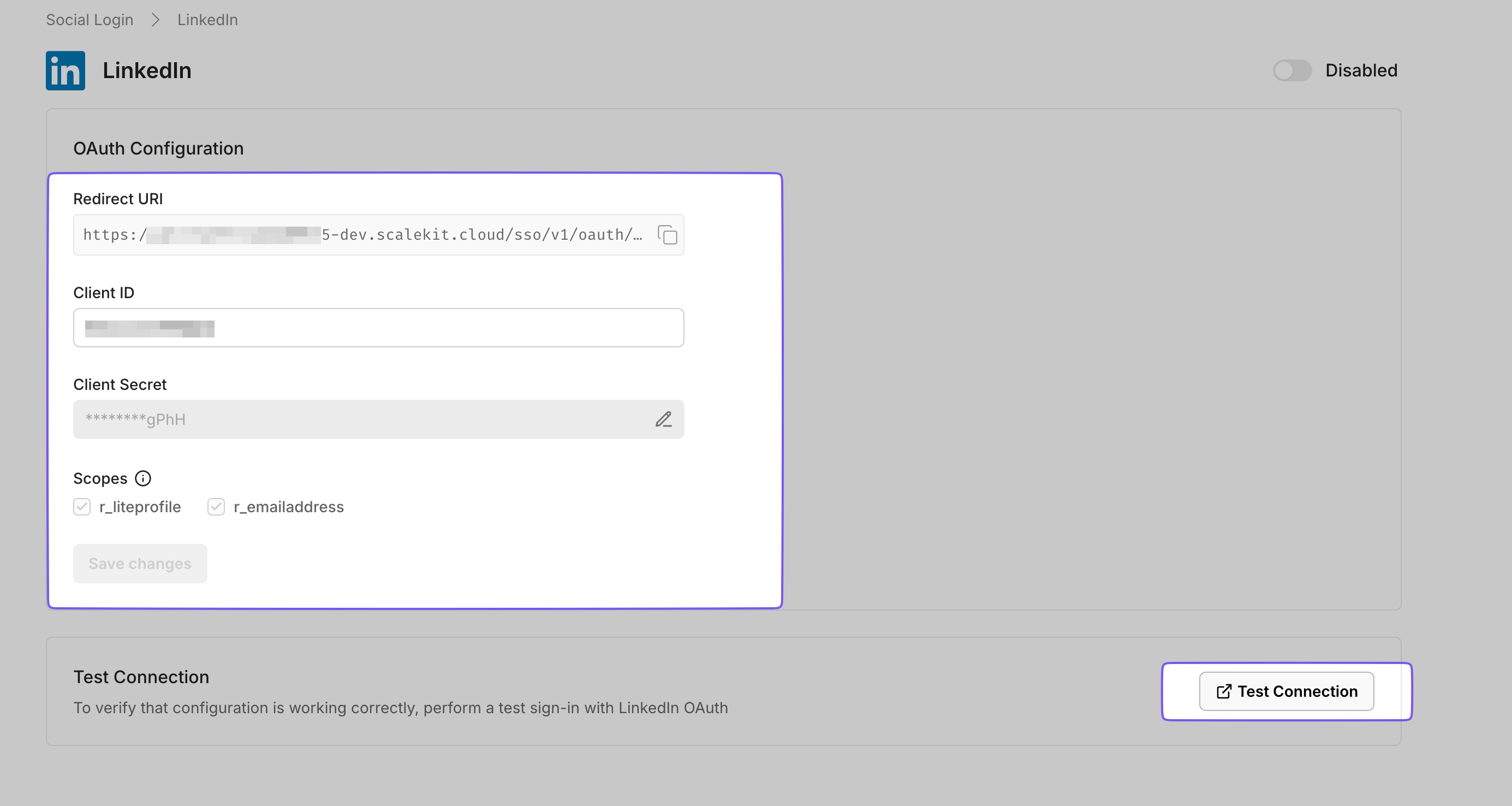LinkedIn as your sign in option
Scalekit enables apps to easily let users sign in using LinkedIn as their social connector. This guide walks you through the process of setting up the connection between Scalekit and LinkedIn, and using the Scalekit SDK to add “Sign in with LinkedIn” to your application.

By the end of this guide, you will be able to:
- Set up an OAuth 2.0 connection between Scalekit and LinkedIn
- Use the Scalekit SDK to add “Sign in with LinkedIn” to your application
Connect LinkedIn with Scalekit
Section titled “Connect LinkedIn with Scalekit”-
Navigate to social login settings Open your Scalekit dashboard and navigate to Social Login under the Authentication section.

-
Add a new LinkedIn connection Click the ”+ Add Connection” button and select LinkedIn from the list of available options.
Configure OAuth settings
Section titled “Configure OAuth settings”The OAuth Configuration details page helps you set up the connection:
- Note the Redirect URI provided for your app. You’ll use this URL to register with LinkedIn.
- Client ID and Client Secret are generated by LinkedIn when you register an OAuth App. They enable Scalekit to authenticate your app and establish trust with LinkedIn.
Set up LinkedIn OAuth 2.0
Section titled “Set up LinkedIn OAuth 2.0”LinkedIn lets you set up OAuth through the LinkedIn Developer Platform. Follow LinkedIn’s instructions to set up OAuth 2.0.
- Use the Redirect URI from Scalekit as the Redirect URI in LinkedIn’s setup
- Copy the generated Client ID and Client Secret into the Scalekit Dashboard
- Click “Save Changes” in Scalekit for the changes to take effect

Test the connection
Section titled “Test the connection”- Click the “Test Connection” button in Scalekit
- You will be redirected to the LinkedIn Consent screen to authorize access
- A summary table will show the information that will be sent to your app
